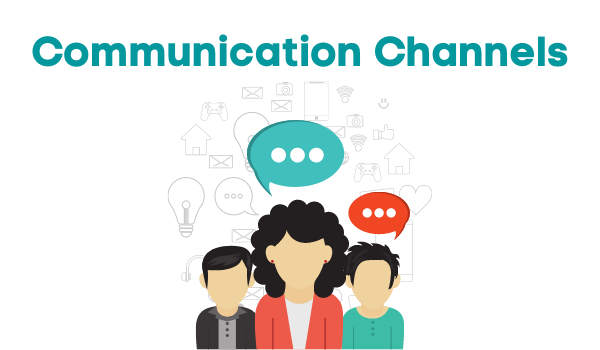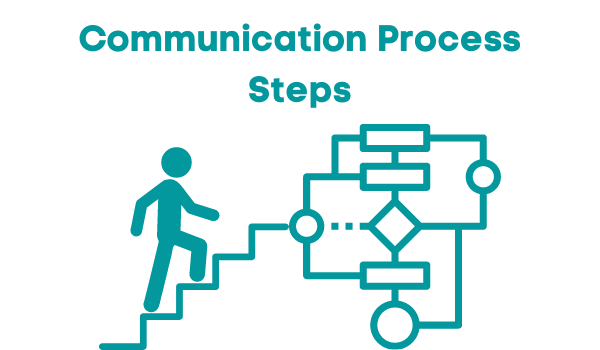What is the Meaning of Communication
General
Communication has deep meanings for human society. It transforms one’s inner thoughts and feelings into exterior forms of expression that the other party receives and interprets.
Communication is the act of transferring information between two parties (sender and receiver) using speech, signs, writing, or graphical representations.
All living beings on this planet have developed a way to communicate. As social beings, humans found ways to calibrate their interpersonal communication channels to ensure their survival and mutual understanding’s needs.
Learning how to become effective communicators helps strengthen the communication cord between the involved parties.
Although the exchange of information can be viewed as a simple act of sharing, communication is, in fact, a widely complex process that involves successfully transmitting or imparting the desired message, information, idea, or emotion.
Contents

Components of communication
The three main elements that every communication processes have are:
A sender
A message
A receiver
The sender is the one who encodes the message, while the receiver decodes it as best as it can.
While the sender is usually one entity, the receiver can be represented by one or multiple entities forming a group of receivers.
Often, the receiver may have a completely different understanding of the message than the sender’s original concept of the information sent. Additionally, persons from the receiver group may have different interpretations of the same received message depending on a series of factors like:
- levels of emotional intelligence,
- levels of active listening,
- perception of the tone of voice
- interpersonal skills
- personal barriers to effective communication
The receiver engages in the communication through feedback either during the message's conveyance or afterward.
In addition to the mandatory presence of a sender, message, and receiver, there are other factors that define a propper communication process.
The context of the message, the environment, and the rate of potential interferences that could alter the message need to be considered.
Depending on the level of interaction and feedback that the sender collects from the receiver, the sender can adjust its message for optimal delivery.
Communication categories
Communication can be widely categorized in:
Verbal communication - any type of spoken information (face-to-face, radio, telephone, television, video-call)
Non-verbal communication - from gestures, body language to how one dresses, non-verbal communication can be found in many subtle details that the sender embodies. Non-verbal communication can also be perceived from unconscious emotional states and moods.
Written communication - represents all forms of information transfer, including letters, e-mails, social media, books, magazines, the Internet, and other media outlets.
Visual communication - from logos to graphs and charts, maps to paintings; visual communication is one of the oldest forms of transmitting information into the world.

Communication channels
A communication channel is a medium through which information is shared with an audience.
Choosing a suitable communication channel is a vital aspect of communication that directly impacts the effectiveness of the information transfer. Depending on the type of communication, the channels can be categorized in:
- Face-to-face conversations
- Phone calls
- Video calls
- Text messages
- Emails
- Written letters
- Chats and messaging
- Blogs
- Formal written documents (brochures, reports)
- TV
- Radio
Depending on the style of communication, the channels can be categorized in:
- Formal (newsletters, business plans, instructions, annual reports, agreements, board presentations, contracts, regulations).
- Informal (personal letters or emails, greetings or holiday cards, weather, news).
- Unnoficial channels (general talk, rumors, sharing of social news, general chat).
The success rate of accurately transmitting the intended meaning of information is dependent not only on the form of communication and the channel but also on the level of communication skill the sender possesses.

Communication process steps
According to Stephen W. Littlejohn & Karen A. Foss in Definitions of Communication from Encyclopedia of Communication Theory, communication is commonly used to refer to a wide range of different behaviors (broadly: "the transfer of information").
A communication process embodies a set of steps:
- Establishing the motivation or reason for sharing the information
- Elaborating the essence of the information through message composition
- Encoding the message
- Transmitting the information through the chosen channel
- Receiving the message
- Decoding the reassembled encoded message
- Interpreting the presumed original message
Depending on the model of communication, the information makes its way from the sender to the receiver and enacts upon the audience a certain level of feedback or intended action.
For example, the transactional model of communication aims at sharing the information between the interlocutors, having both parties interchange the roles of sender and receiver, keeping the focus on the message.
In comparison, the interactive communication model focuses upon feedback in addition to the target of the message.
In conclusion, communication is a vital part of human life, impacting society at its core.
Communication facilitates the sharing of information and the development of human relationships.
External links: